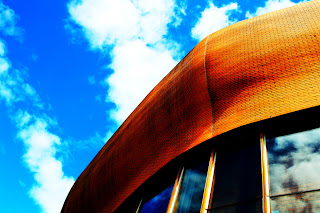Exposure is determined by three factors: number one is aperture, number two is shutter speed and number three is ISO setting (sensitivity value of the film or sensor).
Any change in one of these factors will result in a change in the exposure. So, if one factor is changed, but exposure has to remain the same, then second of these factors have to be adjusted accordingly.
Now, lets see how it works. Lets say our ISO setting is 200 and aperture is f2.8 and the shutter speed is 1/250 of a second. And let's assume that these settings will result in a correctly exposed image in the lighting conditions we're in. So, lets change the ISO setting from 200 to 100 because the lower ISO will give us better quality image with less noise. By doing this the exposure will become underexposed (darker image) by one stop. Stop is a term to describe the amount of exposure change. Now we need to adjust either aperture or shutter speed, in order to correct the exposure, we need to compensate for reduction in sensitivity. We need to allow more light to reach the film or sensor. So, we decrease the shutter speed by one stop, that results in 1/125 of a second, half of the original value. By doing this we retain the aperture value the same - f2.8. If we need the shutter speed to remain at 1/250 of a second than we can increase the aperture from f2.8 to f1.4 by one stop, this way we compensate for reduction in sensitivity by letting in more light during the same time frame.
When exposure values are being set we need to prioritize what is important, depth of field (aperture value) or freezing/blurring a moving subject (shutter speed), image quality (ISO setting). When we got our priorities right we can set the values accordingly.
All modern cameras have built in light meters, which measures the light and can determine what is the correct exposure, this helps us. We only choose two values and the camera can set the third accordingly. Use aperture priority mode on your camera if you need a certain aperture, or use shutter priority mode if you need a certain shutter speed, assuming that you have chosen your ISO sensitivity beforehand. If you want full control of the exposure, you can use manual mode in which you have to set both, aperture and shutter speed.
One more way to change the exposure is by using exposure compensation setting, which allows you to tell the camera by how much it should underexpose or overexpose the image. Thing is, that cameras aren't as smart as we are, so exposure errors occur in difficult situations which fool the meter. And in these situations you, the photographer step in and correct things as they should be.
21.10.07
Exposure triangle in photography
Author
Sheriff
at:
19:08
![]()
Lables: Introduction
Subscribe to:
Post Comments (Atom)

1 comment:
Best of luck with the new blog from Paul @ www.photographyvoter.om
Post a Comment